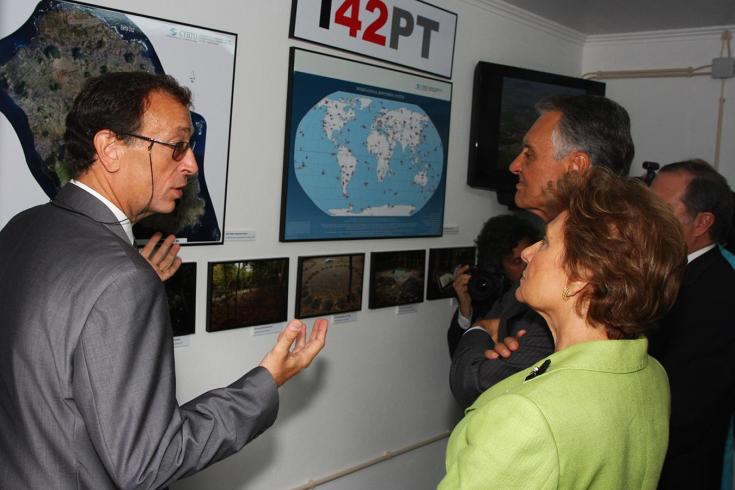President of Portugal visits IMS
station on the Azores
station on the Azores
Graciosa is one of nine volcanic islands constituting the Azores archipelago. IS42 was installed in 2010 and is one of 60 infrasound stations in 35 countries worldwide. The station comprises eight data acquisition elements and one central recording facility. Since its installation in 2010, the station has had an impressive data availability of almost 100%.
Infrasound stations are capable of measuring acoustic waves with very low frequencies, inaudible to the human ear. As part of the Comprehensive Nuclear-Test-Ban Treaty's (CTBT) IMS network, they help monitor the Earth mainly for atmospheric nuclear explosions. The Azores also profit directly from the station, which has been integrated into the national volcanic earthquake surveillance network of the Azores to monitor geological hazards and general seismic activity in the region.
Nicolau Wallenstein from the Center for Volcanology and Geological Risk Assessment of the University of the Azores (right) showing President Aníbal Cavaco Silva and First Lady Maria Alves da Silva around the station.

Station IS42 is one of 337 facilities that monitor the globe for any sign of a nuclear explosion.
The verification regime of the CTBT is an extremely important element to make sure that the world can react in time to an event that may endanger international peace and security.
IS42 on Graciosa Island was certified as meeting the CTBTO's quality standards in December 2010. Click for detailed information (PDF).
21 Sep 2011